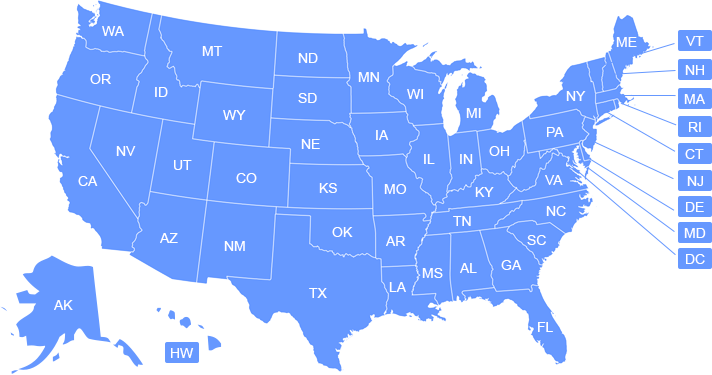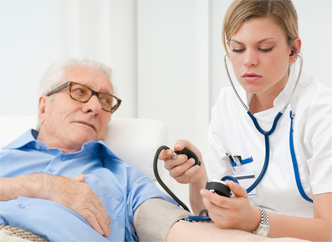
Find CNA Classes by City and State :

INTRODUCTION
It is highly recommended that you attend a state approved course for CNA training. These schools meet the quality standards that the state and the US government require. These classes are held across our nation in local community colleges, vocational or technical schools, in nursing homes, in hospitals, and with the American Red Cross. All of the state approved schools must have at least 75 hours of training, with at least 16 of these total hours spent learning “hands on” skills. Some CNA training courses may have more hours of training. You can learn where these schools are, and more about them, by going to your state’s CNA registry or by calling the registry. You may be able to complete a portion of your training by taking Online CNA Classes.
THE COST OF THESE CLASSES
The typical cost of a CNA course can range from $800 to $1,500. Books and uniforms may, or may not, be included in this tuition. You may also want to check with the schools in your area to find out if they have any scholarships or tuition assistance. This can cut the cost considerably.
WHO TEACHES THESE CLASSES?
All students in CNA training programs are taught by a registered nurse (RN) who has:

- At least 2 years of nursing experience with at least 1 of these years in a nursing home, or long term care facility; and
- Taken and finished a formal course relating to adult education OR has had documented experience as a teacher of adults or the supervision of nursing assistants.
CNAs can be taught by another instructor, such as a licensed vocational nurse (LVN), a licensed practical nurse (LPN), social worker or fire safety expert, at times, but all of this teaching is under the supervision of the RN instructor and each instructor must have at least 1 year of experience in their field.
An RN or a LPN must supervise all CNAs students while they are in the clinical area providing care to residents. This protects the safety of the residents and patients.
WHAT SUBJECTS ARE TAUGHT?
All CNA training programs must have at LEAST the following subjects. Some may have more, but all CNA training programs must at least have these subjects. You will see these subjects and some of the things you will learn for each subject below.
Communication and interpersonal skills
- Verbal, or oral, communication skills
- Verbal skills such as body language, facial expressions, and touch
- Communication with special groups of patients, such as confused patients, young children, those who speak a language other than English, and patients who have trouble speaking
- Cultural differences in the communication process
- “Elder speak”
- Therapeutic communication
- Respect
- Proper and appropriate use of humor
Infection control
- Hand washing
- Medical and surgical asepsis
- Standard precautions
- Isolation procedures
- Personal protective equipment (PPE), such as gloves and masks
Safety
- Patient identification
- Preventing falls
- Wandering
- Elopements
Emergency procedures
- External emergencies and disasters, such as cyclones, earthquakes, and bombs
- Internal emergencies, such as fires, the loss of electricity, and violence in the workplace
- Patient emergencies, such as sudden death, choking, and disturbed behavior
- CPR skills
- Heimlich maneuver
Promoting residents’ independence
- Offering choices
- Helping people only as much as they need
Respecting residents’ rights, such as the right to:
- Respect and dignity
- Privacy
- Confidentiality
- Freedom from abuse and neglect
- Control over their own money
- Have one’s own personal property
- Know about their medical condition and treatments
- Choose their own doctor(s)
- Make their own decisions about their medical care
- Competent care
- Religious and social freedom
- Accurate bills for services given
- Complain and to be heard and understood
Basic nursing skills such as:
- Taking and recording vital signs like pulse, respirations, blood pressure and temperatures
- The proper method of taking the pulse , respirations, blood pressure and temperatures for different age groups and those with special problems
- Accurately measuring and recording height and weight
- Caring for the residents’ environment and insuring safety and cleanliness
- Observing and noting changes in body functioning that are NOT normal
- Reporting all patient changes, especially those that are NOT normal and/or are different for the patient or resident
- Taking care of people who are dying and at the end of life
Personal care skills like:
Bed making
- Unoccupied beds
- Occupied beds
- Surgical beds
- Body mechanics
Bathing
- Showers
- Tub baths
- Complete bed baths
- Partial bed baths
Grooming
- Mouth care
- Denture care
- Tooth brushing
- Hair care
- Finger nails and toe nails care
- Shaving
Dressing
- Offering choices
- Providing assistance as needed
- Helping people with special needs like a paralyzed left arm
- Maintaining patient privacy and dignity
Toileting
- Using and caring for urinals, bedpans and commodes
- Bowel and bladder training
- Incontinence
- Toileting and toileting safety
Assisting with eating and hydration
- Nutritional needs of all age groups
- Fluid, or hydration, needs of all age groups
- Special diets, like a pureed diet
- Special fluids, like thickened fluids
- Swallowing disorders
- Safe eating and drinking
Proper feeding techniques
- Proper and safe positioning
- Special utensils like forks, plates and spoons
- Group, restorative feeding programs
- Assisting residents and patients to eat on their own
- Helping people eat who have a problem like blindness
Skin care
- Keeping the skin clean and dry
- Pressure sores, or bed sores
- Back rubs
- Turning and positioning
- Soaps, lotions and other items
Transfers like transferring a patient or resident:
- From the bed to the chair
- From the bed to a stretcher
- From the chair to the bed
- From the bed or chair to the commode
Safely transferring patients who special problems like weakness or paralysis on one or both sides
- The proper use of gait belts
- Positioning and turning
- Body mechanics
- Back safety
- Various positions
- Turning and positioning techniques
- Using a trapeze and turning sheets
- The need for turning and positioning
- Observations during turning and positioning
Mental health and social service needs such as:
Patient behavior and behavior management
- Reasons that some patients and residents act out with poor and/or dangerous behaviors
- Examples of improper, disruptive and dangerous behaviors
- Triggers
- Preventing disturbed behavior
- Managing poor behavior
- Delirium, dementia and Alzheimer’s disease
- Interventions, including reporting, as related to poor behaviors
The developmental tasks, physical and emotional changes associated with the aging process
- Normal changes among the elderly in terms of the skin, nails, hair, muscles, bones, heart, respiratory system, blood, digestion, bladder, nervous system, sight, hearing, sense of smell, taste, thinking, learning and social needs
- Abnormal physical and emotional changes among the elderly
- The special needs of the elderly
- Promoting the patient’s and resident’s rights including their freedom to make personal choices
- Collaboration with family, friends and others to promote a good quality of life for the older person
The care of cognitively impaired residents:
The unique needs of those with dementia, including those with Alzheimer’s disease
- The signs of Alzheimer’s disease
- The stages of Alzheimer’s disease
- Caring for people with Alzheimer’s disease and other forms of dementia
Communicating with cognitively impaired residents
- Using pictures
- Simple words
- Short and understandable statements
- Pictures
- Word boards
Understanding the behavior of cognitively impaired residents
- Identifying poor behaviors
- Preventing poor behavior
- Reporting poor behaviors
Responses to the poor behavior of cognitively impaired residents
- Intervening in terms of poor behavior, including the teamwork needed to succeed in a behavior management program
- Handling emergencies when the person is dangerous to self and/or others
Methods of reducing the effects of cognitive impairments
- Orientation to time, place and person
- Calendars
- Stimulation such as the TV or radio
- Reminders
- Cues
- Establishing routines
- Social activities
Basic restorative services like:
Self care promotion:
- Identifying the person’s strengths and weaknesses
- Allowing the person to do as much as they CNA for themselves
- Helping the person only in areas in which they need help
Using and maintaining assistive devices for eating, dressing, ambulation, and transfers:
- Wheelchairs
- Walkers
- Canes
- Crutches
- Safety relating to wheelchairs, walkers, canes and crutches
- Maintaining wheelchairs, walkers, canes and crutches in proper and safe working order
- Dressing devices such as mechanic reaches to pick items up from the floor and long shoehorns
- Special eating devices like weighted plates, sectioned plates, and special forks and spoons
- Transfer belts
- Hoyer lifts and other mechanical lifting devices
Range of motion (ROM)
- Purpose of range of motion
- Normal joint movement for all joints
- Active range of motion
- Passive range of motion
- Active/assist range of motions
- Contractures
Proper turning and positioning in bed and chair
- Purpose of turning patients
- Frequency of turning and positioning
- Turning and positioning techniques
- The supine position
- The prone position
- The lateral position
- Trendelenburg position
- Sim’s position
- Other positions
Bowel and bladder training
- Incontinence
- Problems associated with incontinence
- Cleaning the incontinent person
- Toileting
- Briefs
- Bowel and bladder training
Care and use of prosthetic and orthotic devices
- Splints
- Braces
- Artificial limbs
- Artificial eyes
Residents’ Rights.
- Providing and maintaining privacy during patient care
- Maintaining confidentiality and privacy, as per HIPPA
- Encouraging patients and residents to make their own personal choices and decisions
- Helping the person to report and resolve disputes and problems
- Encouraging and helping the patient to get to groups and other leisure activities
- Securing and safeguarding patients’ personal property and money
- Insuring that the environment is FREE of any abuse or neglect
- Promptly reporting any suspected abuse, neglect or bad treatment
- Avoiding the use of restraints with alternative measures and prevention
THE DAY IN THE LIFE OF A CNA STUDENT

You will have textbooks, notebooks, study guides, etc before you begin the knowledge part of your CNA training. Likewise, you will have a school uniform and other things, such as a stethoscope and clinical handbook, before you do your “hands on” skills part of your CNA training.
You will begin your CNA course with an orientation about what you can expect and things that you will be doing throughout your course of study. You will also get a brief orientation to the healthcare facility, or nursing home, that you will be going to throughout your course of study for your practical “hands on” skills. The first several hours of the CNA training will consist of the basic, knowledge and skills needed in order to safely care for people in the clinical area. Of these hours, you will be in the classroom learning about some basic safety and infection control procedures. The other hours will be in the nursing “lab” learning and practicing basic skills like bed making, bathing, grooming and hygiene. Some of these skills will be done on realistic “dummies”, or mannequins; others will be learned and practiced on fellow students.
After these early hours of the CNA training course are done, you will get additional classroom hours and you will enter into the clinical area and take care of actual patients, under the direct guidance and supervision of your instructor. You will wear your school’s CNA uniform, required footwear, or “nursing” shoes, and have other needed items with you. Some of these things are a stethoscope and, perhaps, a clinical handbook that is used as a reference and a notebook.
The number of classroom and clinical hours per week vary from school to school but, nonetheless, there are many, many things that are common to all. You will have to:
- have nearly perfect attendance,
- be on time for all class and clinical days,
- read and study your books,
- practice the CNA skills,
- take and pass your quizzes, tests and your final exam, and
- take and pass your “hands on” skills testing.
Many schools have policies relating to behaviors that CNA lead to the immediate removal of a student from the CNA school. These things involve behaviors that can, or actually do, place a person in danger of physical or emotional danger. Some of these serious actions are:
- Patient abuse, neglect and/or maltreatment
- Failing to properly identify a patient
- Failing to wash one’s hands before and after patient contact
- Stealing
- Substance abuse
- Agitated or hostile CNA student behavior
- Other misdemeanors or felonies
The CNA course of study is very possible for many people. Success is just around the corner. You CAN do it!
By Catherine Kaufman

